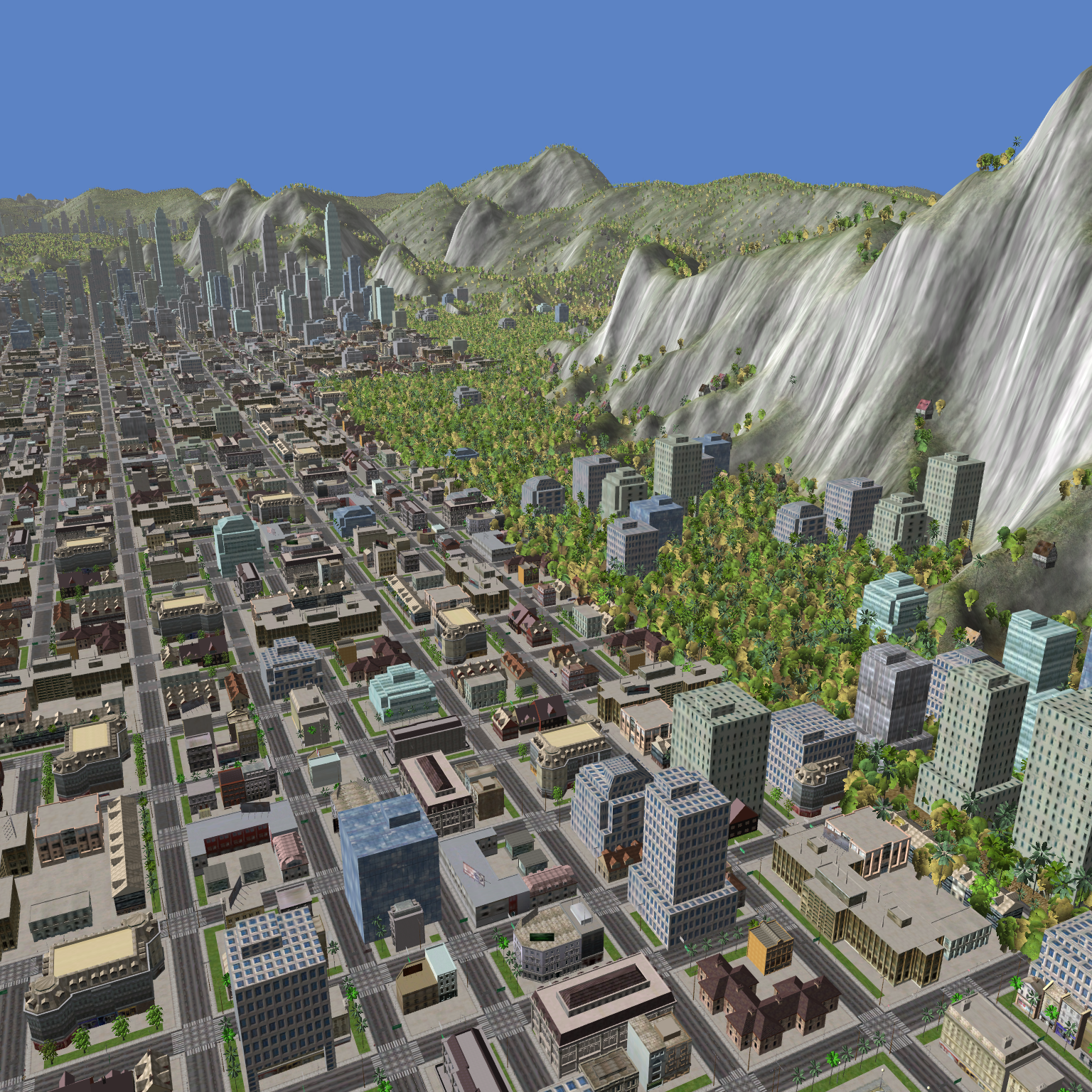Building A Virtual City |
Vision The goal of this project is build a virtual city full of scripted
objects and activities. We envision a bustling city filled with
buildings, street vendors, taxis on the roads, and inhabitants going
about their business. The system we've built provides the basics: you
can add objects to the world and add scripts to them to control their
behavior and make the interact with each other and avatars. It's up
to you to take these building blocks and create a compelling,
interactive, and fun city for users to visit.
The goal of this project is build a virtual city full of scripted
objects and activities. We envision a bustling city filled with
buildings, street vendors, taxis on the roads, and inhabitants going
about their business. The system we've built provides the basics: you
can add objects to the world and add scripts to them to control their
behavior and make the interact with each other and avatars. It's up
to you to take these building blocks and create a compelling,
interactive, and fun city for users to visit.What might you script objects to do? Here are a few ideas:
|
How Applications Are Built We've developed a new virtual world system called Meru and we'll
set up servers running a mostly blank world. You'll start adding
objects to this blank world -- buildings, cars, and shops to set the
scene. This will involve collecting meshes to store in the system and
creating some static objects in the world that display those meshes.
We've developed a new virtual world system called Meru and we'll
set up servers running a mostly blank world. You'll start adding
objects to this blank world -- buildings, cars, and shops to set the
scene. This will involve collecting meshes to store in the system and
creating some static objects in the world that display those meshes.Then we need to bring the world to life by scripting objects to make them active. In a script you can control the behavior of an object (make it move, change its mesh, or animate) and interact with other objects with messages. Each object starts "blank" and static. The creator then edits properties and adds scripts to in in-world. By telling it how to respond to events, either from the system (e.g. another object came nearby) or from other objects (e.g. an avatar sent a message to it), you can create interesting interactive experiences for visitors to the world. We talk about writing applications because usually a collection of objects are scripted to work together. For example, in the art gallery example described earlier, each display might be a separate object and they all may be managed by a separate gallery object. |
ResearchBuilding a world using our system provides a number of benefits for our research:
|
More InformationFor more information about the project, get in touch with Ewen Cheslack-Postava or Behram Mistree. |